The NFT market has continued to outperform and command the primary attention within the Ethereum ecosystem, despite relatively high network congestion and fees pricing out many retail users.
We can see the magnitude of impact simply by looking at the gas consumption rankings, where NFT projects sit on top of the leaderboard. One-off NFT minting events typically consume relatively large volumes of gas, and secondary trading activity on OpenSea remains the firm leader in gas consumption.

In this piece, we will study the impacts of this NFT momentum, and assess whether any user activity and attention is starting to leak back into the DeFi ecosystem.
NFT Growth Continues
OpenSea has managed to bring significant attention to the ecosystem, both from a retail and institutional perspective. More than 200k users (unique addresses) are trading monthly on OpenSea secondary markets. This marks an acquisition of 150k+ users for the platform in August alone.
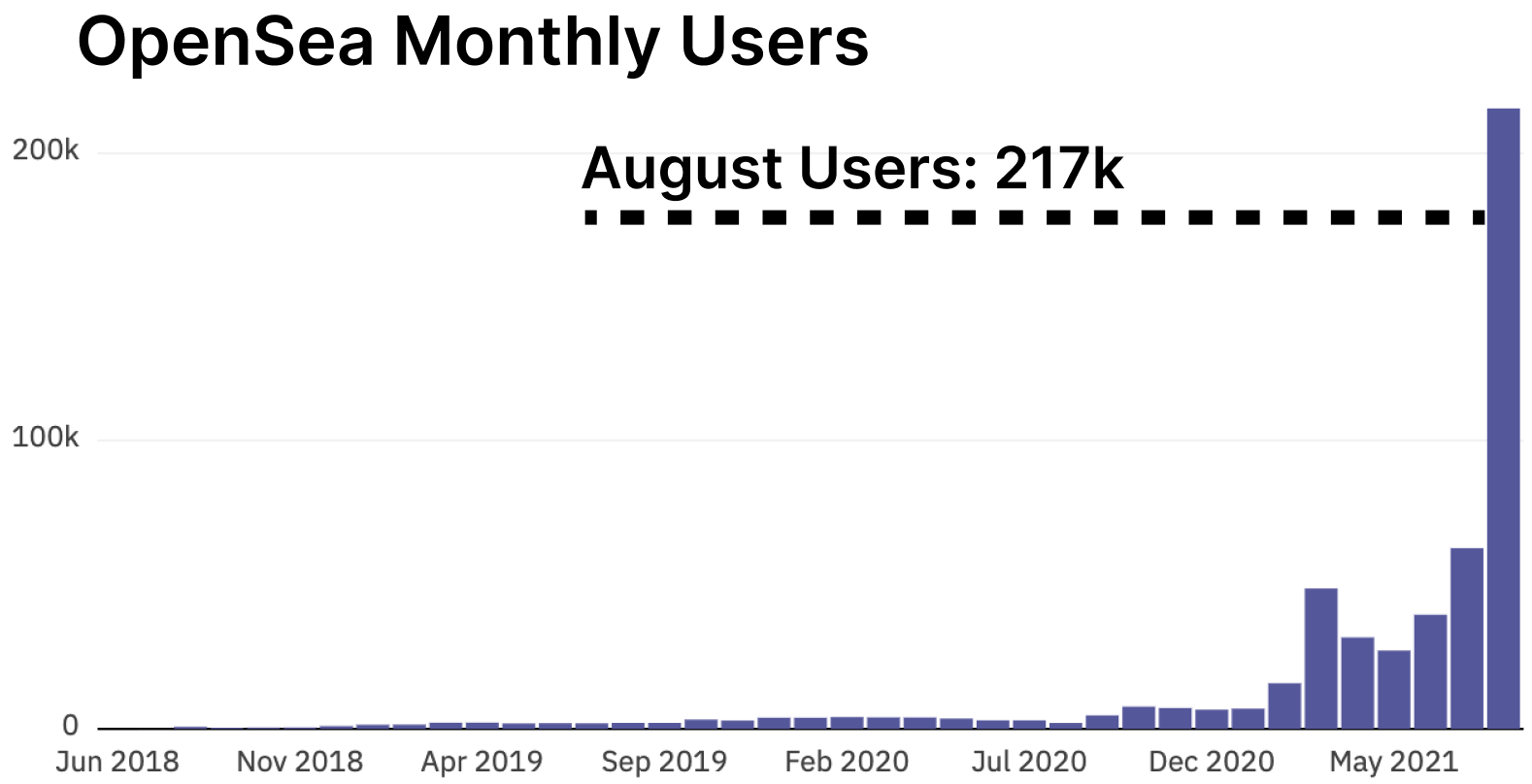
For comparison, crypto’s most used protocol Uniswap acquired 183,000 users in the month of August. These new Uniswap traders do however demonstrate less daily trading activity when compared to OpenSea active users. In other words, Uniswap traders are performing fewer trades and are less active than the equivalent NFT traders on OpenSea. NFT activity has consistently outpaced Uniswap in daily active users throughout the month.
These OpenSea users have brought monumental trading volume. In our intro piece on NFTs we projected >$1B in volume. Actual realized volume for the month of August has since closed at over $3.3B, an incredible 3.3x from start of month projections.

Again adding context, through August, Uniswap did $50.6B, still dominating in cumulative volume amongst any types of exchanges across crypto, despite losing the lead in gas consumption to OpenSea. OpenSea ended strong with a daily cross over the $300M volume mark on the 29th. For comparison, Uniswap did $1.3B in volume on the 29th. 7-day mean volume for OpenSea sits at $223M, a truly historic rise for the leading secondary market for NFTs.

Certainly this volume has come on the back of massive speculation and wild pumps in the prices of many NFT collections. Leading the charge have been Cryptopunks and Bored Apes, as both have seen their floor prices and average sales rise by >400% over the month. Cryptopunks are the highest value collection with total value estimated in the multiple $Billions while Bored Apes hover around the $1B mark. Note that a total collection valuation is not as straightforward as for fungible tokens as not all of the pieces are listed for sale.
Cryptopunks have reached an average sale price exceeding $400k, with the lowest sales coming in at a floor around that same price.

Meanwhile, amongst increased interest from celebrity figures, and an additional collection drop of Mutant Apes for Bored Ape holders, Bored Apes have watched their floor skyrocket, reaching 48 ETH ($158k).
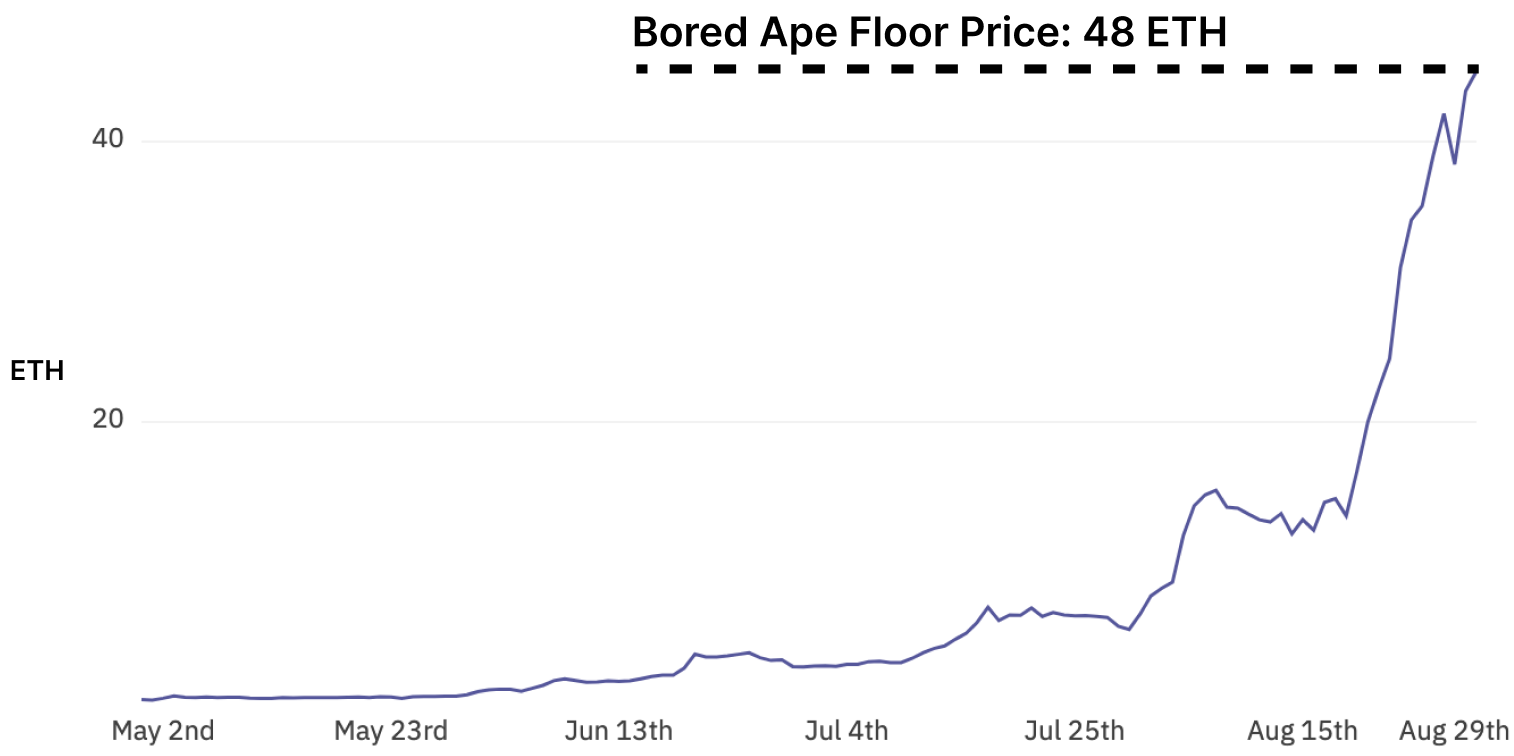
Is the Energy of NFTs Trickling Into DeFi?
It stands to reason that as both retail and institutional users move assets from centralized exchanges to their personal wallets on-chain to buy NFTs, these assets become more likely to interact with the DeFi ecosystem. As users may need to trade assets on-chain between ETH and stablecoins in order to transact on their secondary NFT market of choice, some portion of this volume is likely to end up in liquidity pools and money markets.
This story begins with exchange balances, where Ethereum has now flipped Bitcoin for having the lowest percentage of the coin supply held on exchanges for the first time since late 2018. This shouldn’t come as a surprise at a time where the Ethereum ecosystem is creating a plethora of on-chain destinations for ETH outside the confines of centralized exchanges.
Core examples are NFT purchasing power, chasing yield in DeFi protocols, and increasingly gaming projects. Meanwhile, Bitcoin on exchanges remains mostly flat, as few incentives exist for deploying the assets outside centralized exchanges or cold storage.
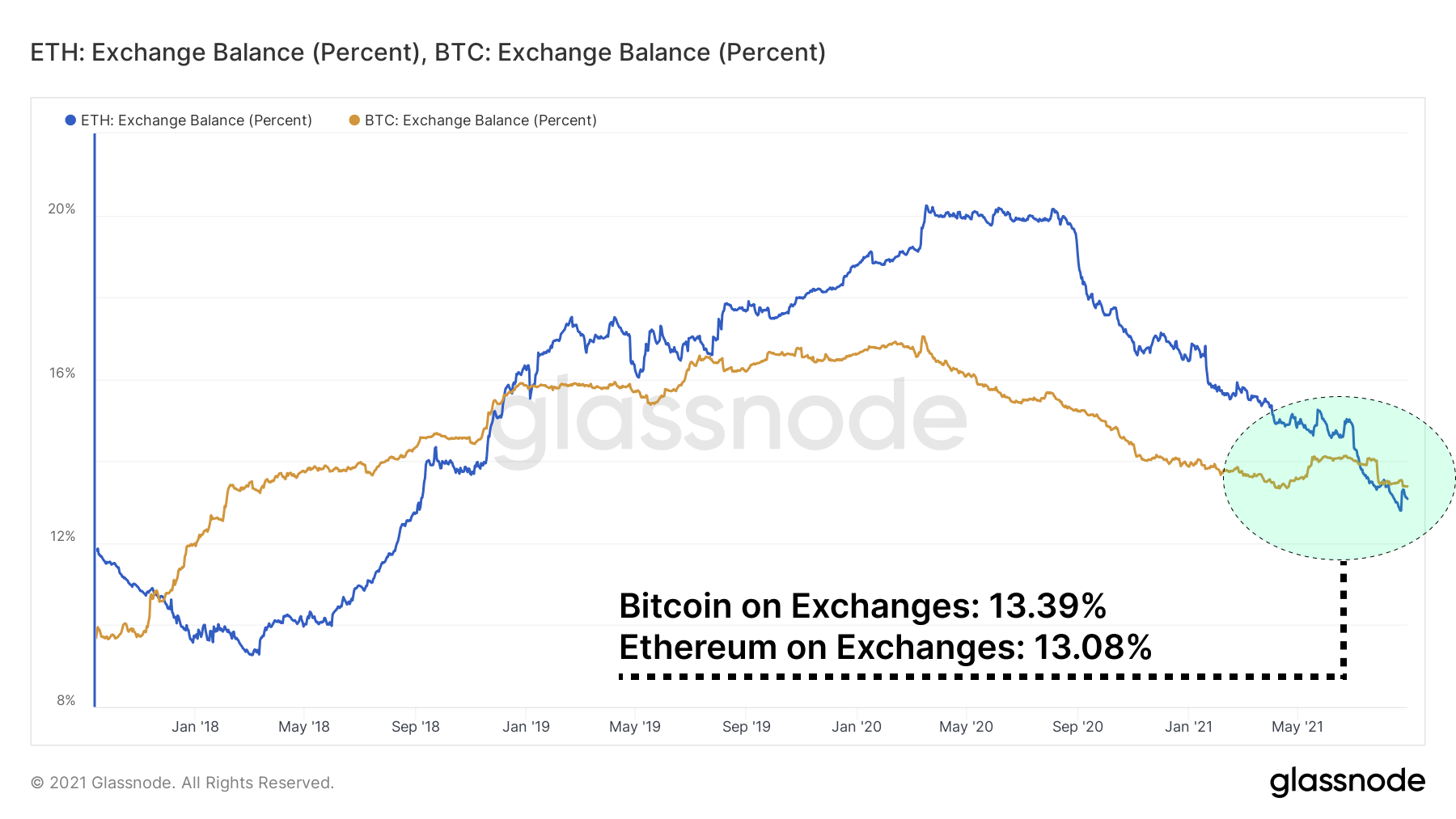
After months of risk-off activity in stablecoin lending, markets have finally woken up as much of the ecosystem shows early signs of risk-on appetite. Whether to borrow funds, purchase NFTs, or chase yields in DeFi across L1 incentive programs, rates have finally found some upward momentum.
Despite this blip in risk-on attitude, TVL remains firmly led by stablecoins deployed in lending and DEX pools. For a true signal of risk-on appetite, we would see a shift in liquidity to encompass riskier assets like governance tokens, however this has not yet materialized.
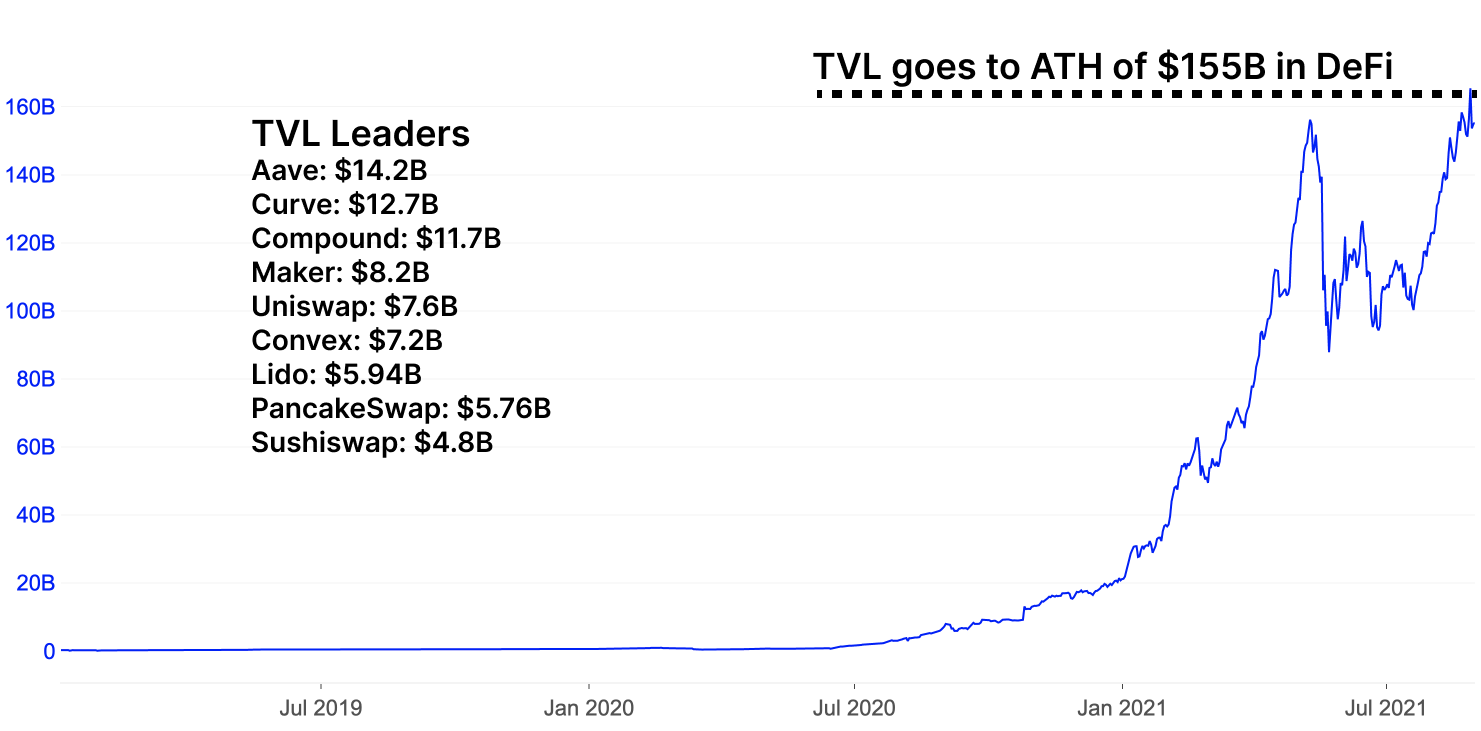
Users can currently earn 7%+ by simply holding and supplying stablecoins like DAI, USDC, and USDT to lending protocols. DAI and USDC have seen ~6-10% APY for a few weeks, while USDT has regularly exceeded 10% APY. These volatile rates have been the state of play for a few weeks on Aave while Compound has remained relatively quiet by comparison, remaining a more attractive market for borrowers and less so for lenders.
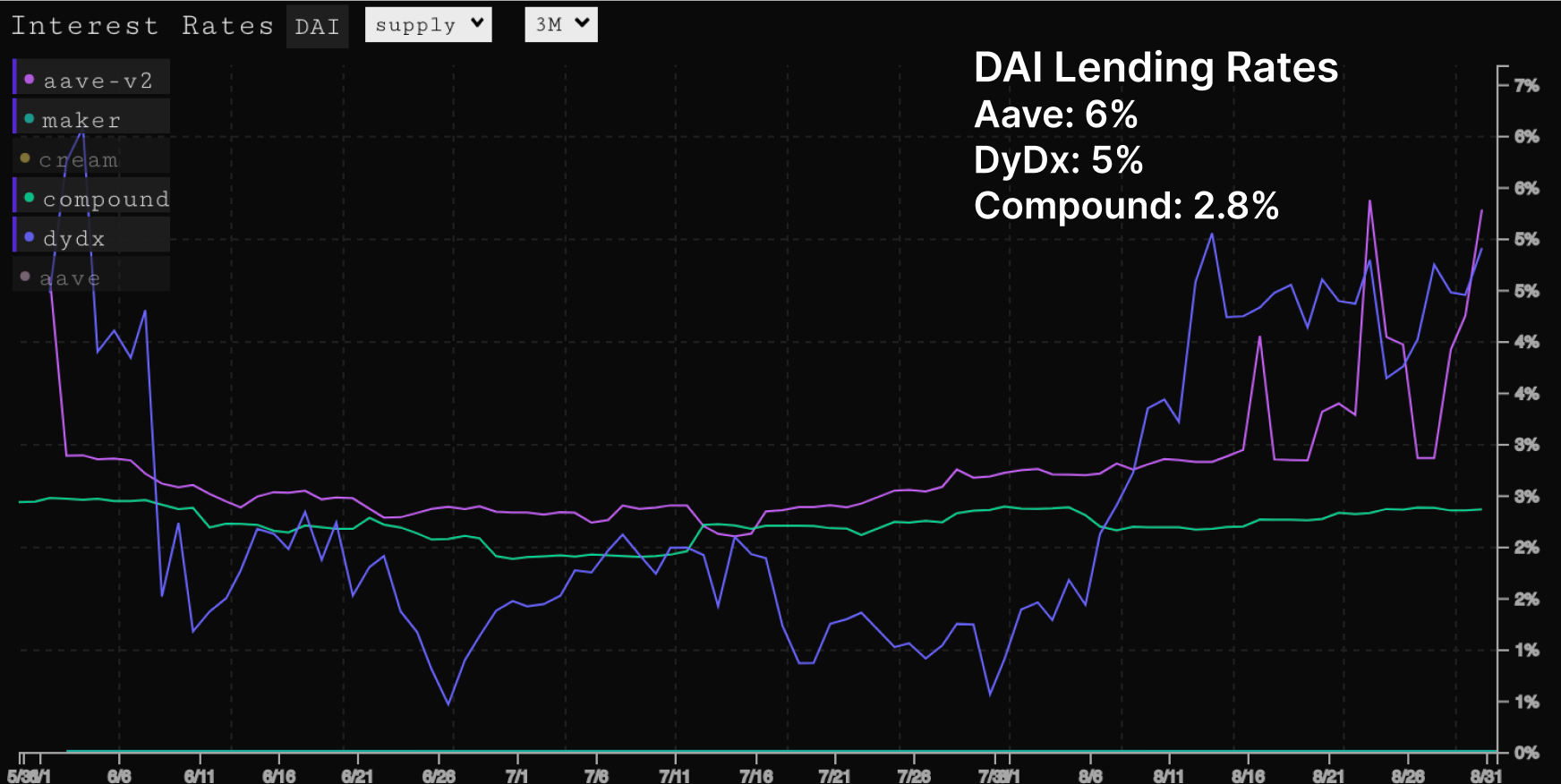
As NFT activity commands ecosystem attention, gas prices have risen to daily levels that price out many retail traders. At > 100 Gwei the current daily mean price to perform a swap on Uniswap, Sushiswap, or elsewhere is valued > $50.
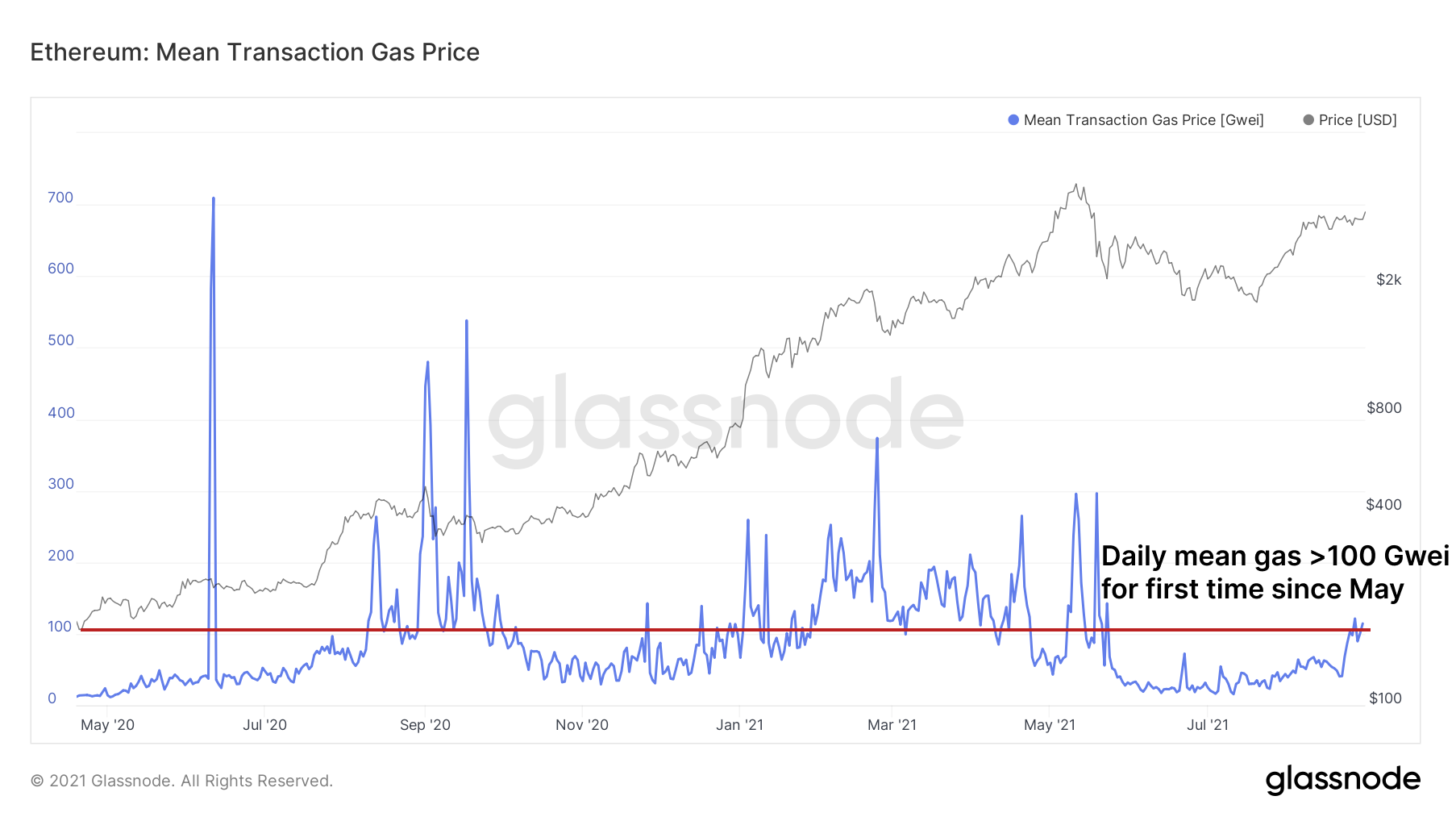
Among this massive rise in transaction costs on-chain, Sushiswap has been a benefactor of significant user growth, outpacing its user-base expansion from previous months.

Another winner has been 1Inch Exchange, the top DEX aggregator of choice with 366k trades over the course of August. This compares to the second place Matcha’s 54k trades over the same period. 7-day 1Inch volume sits at $1.5B vs $0.3B for Matcha. This means average size/trade is larger for Matcha, with 1/7th the # of trades but 1/5th the volume.
Despite 1Inch’s dominance among aggregators, usage across aggregators remains mostly flat over the past 5 months.
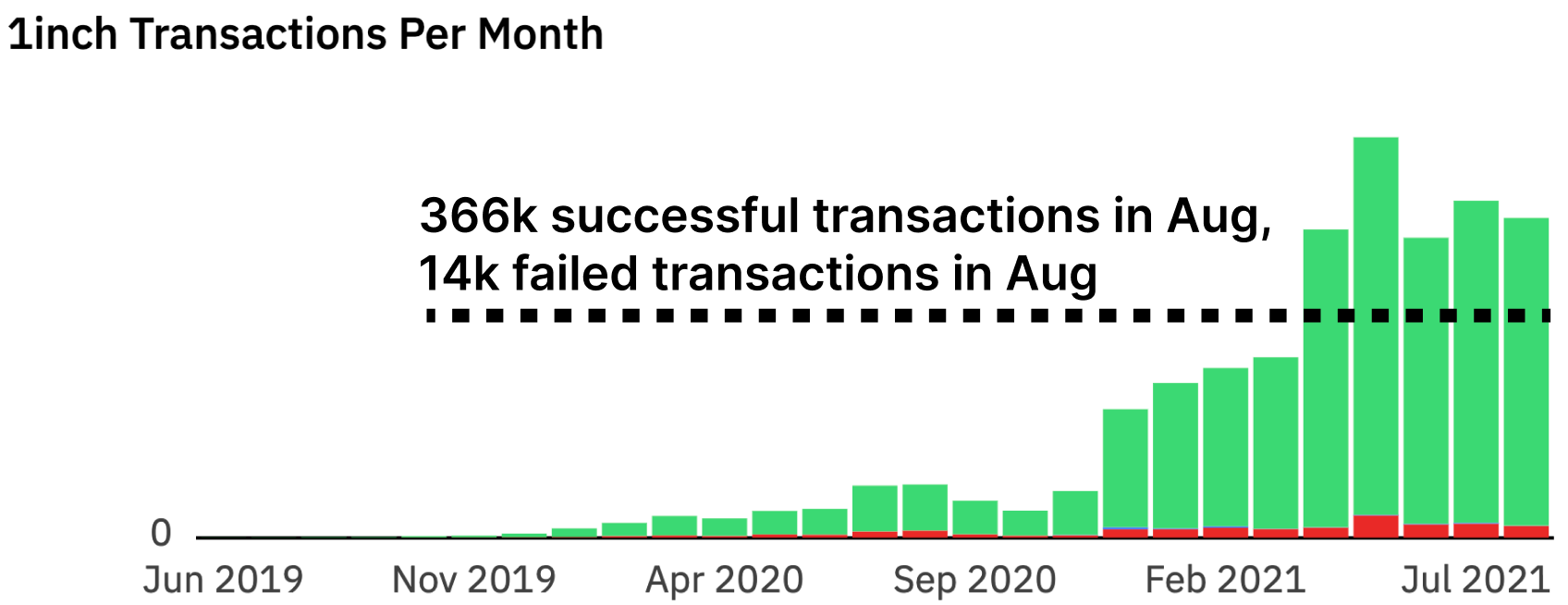
Alternative Layer 1 Performance
Across the layer one ecosystem, Avalanche has seen a minor pullback in liquidity, as many of the associated DeFi token assets in Avalanche additionally see downside price action after showing some strength the last two weeks prior.

In our piece last week we covered the nature of capital rotating into various Layer One ecosystems among their liquidity incentives. Despite hype and incentives, the three largest Avalanche tokens have all seen 50%+ drawdowns since last week’s peak. This ball of liquidity bouncing from chain to chain has showed its complete disregard for loyal liquidity, quick to bounce from one opportunity to the next.

Meanwhile, Fantom and its ecosystem have been the latest Layer One ecosystem to find renewed attention. This follows the launch of a $370M liquidity mining program for projects bridging assets into the ecosystem. Let’s see how the story unfolds as this hot ball of capital moves from one layer one ecosystem to the next.
Closing Thoughts
As OpenSea continues its relentless run to new heights for NFTs, Cryptopunks and Bored Apes Yacht Club (BAYC) have found wildly high floor prices at $400k+ and $130k+, respectively. Countless other NFT projects continue to launch to varying levels of success. DeFi has simultaneously shown hints of renewed appetite for risk-on, however remains largely driven by stablecoin borrow, rather than token speculation. Accordingly, stablecoin capital has pushed the value locked in DeFi to new heights as higher interest rates create attractive risk-off return profiles.
Simultaneously, a few $Billion in value has been transitioning between Layer one ecosystems to arbitrage newly launched liquidity incentives, first by Avalanche, and now Fantom and Celo. The question is whether these rewards create any measurable sticky liquidity and user retention in the long run.
Uncovering Alpha
PlatoAi. Web3 Reimagined. Data Intelligence Amplified.
Click here to access.
Source: https://insights.glassnode.com/defi-uncovered-whats-next-for-defi/



